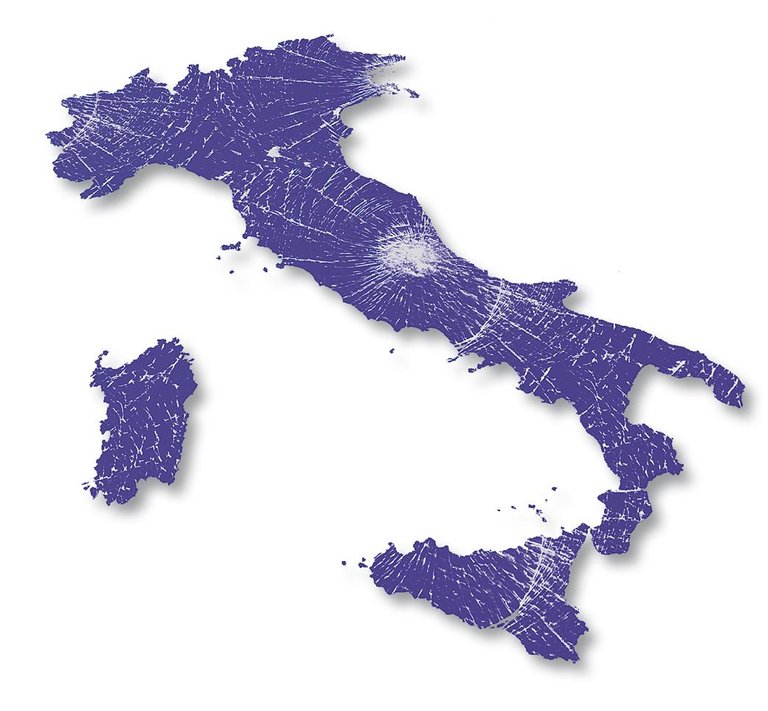Convicted of ignorance

On April 6, 2009, an earthquake of magnitude 5.8 on the Richter scale occurred in L'Aquila (Italy), with 309 dead and 35,000 homeless. In the previous days, in the area they begin to perceive smaller earthquakes, something stronger than conventional ones, extending in society nervousness and anguish. Due to the seismic movements, the National Commission of Great Risks of Italy met, who suggested that the risk of a great earthquake was eternal to reassure society. But the earthquake happened and now the seven members of this commission have been sentenced to 6 years in prison and compensation for multiple homicide, disaster crime and involuntary personal injuries.
On 11 March 2011, an earthquake of magnitude 9.0 hit the Japanese coast: Some 20,000 people were killed and the entire country was alerted for the damage caused by the next tsunami at the Fukushima nuclear power plant. On February 27, 2010, an earthquake of magnitude 8.8 occurred in Chile: 525 dead and 500,000 homes affected. On 12 January 2010, an estimated 7.0 magnitude earthquake in Haiti caused 200,000 deaths. On 26 December 2004, in Indonesia, there was a seismic movement of magnitude 8.9, with more than 300,000 dead along with the subsequent tsunami. To cite some of the nearest earthquakes. The world's best known seismologists work on these lands to better know the earthquakes. No one had foreseen anything, although in all of them there were several earthquakes of inferior scale. Why? Because today it is impossible to foresee where and when earthquakes will occur.
In the vicinity of the California Peninsula, small-scale earthquakes occur every day, and seismologists know that, by analyzing the statistics, a vibration of great force will soon occur, as historically there has been a large-scale earthquake every one hundred years. It has been 106 years since the last brutal earthquake hit the city of San Francisco, and seismologists expect the next, and society. Although it is known that it will come, it cannot be determined when and where it will occur, and in this case it will not be for lack of resources. In the United States, and also in Japan, high-risk seismic territories, research groups with more seismologists and economic resources are working to the fullest. However, even though the data on earthquakes are more and more numerous and knowledge advances, there is still no reliable scientific model to predict earthquakes. What must be done with all the seismologists working in these territories? Accuse the dead of earthquakes and tsunamis and imprison them all?
I insist that there is no reliable scientific model of earthquake prediction or an adequate approximation. If at some point any research group would develop such models, the Nobel Prize would be certified. But, for the moment, the only approach that can be made is statistics. Analyzing the seismic records of each territory we can know every few years an earthquake will occur on a concrete scale in a specific environment. There are, therefore, two options for the California peninsula.
The first is to evict all cities and create camps in rural areas, waiting for an earthquake that prevents death. It must be made clear that about 95% of the earthquake deaths die when buildings fall. But this way we can be one year, two years, ten or fifty, and this situation undoubtedly implies a change of life that society does not want, an economic decline and other serious problems.
The second option is to learn to coexist with the earthquake, reducing to the maximum the number of dead at the time of vibration. In this last option -- undoubtedly the only one to be treated -- the areas to be treated are two. On the one hand, the construction of buildings capable of supporting the movements of the earthquake, assuming an economic expense for it. The village of L'Aquila was surrounded by historical buildings - many in a lamentable situation -, unacceptable in a territory with seismic risk. Even institutions that did not put money to reinforce the stability of buildings could have part of the blame of the dead, could they? On the other hand, we must teach society what earthquakes are and what to do before earthquakes, and that is only possible through education. It is necessary to know how the earth acts and that throughout geological history earthquakes and volcanic activity are normal and nothing can be done to avoid them. However, in this line the new educational plan that the Spanish Minister of Education manages is opposed. In this plan, Geology and the subjects closest to it have no place in high school, they disappear completely. Thus, as in Lorca (Murcia), society will believe that the next earthquake, which elsewhere causes mortals or material damage, will be that of seismologists who have not foreseen the seismic movement, since it will not have its own criterion.
An eye with economists! Perhaps a judge will send you to jail so as not to correctly guess the measure of economic crisis we have over. However, they will never jail the politicians who, knowing that the crisis was coming, did not take the appropriate measures. Beware those who research in medicine, because perhaps a judge says that the dead of AIDS or cancer are your fault, for not having found the right drug, but it will never be the fault of politicians who have not been able to invest enough money. Be careful with meteorologists, since in case there is a rain greater than expected, you may have to take charge of the compensation, because politicians who have not made prior investments to repair those damages do not have, of course, any guilt. I have it clear: asking for earthquakes I will not answer anything to the next one, because I do not want my children to see my father on the way to jail to not know how to answer a question that has no answer.
Buletina
Bidali zure helbide elektronikoa eta jaso asteroko buletina zure sarrera-ontzian










